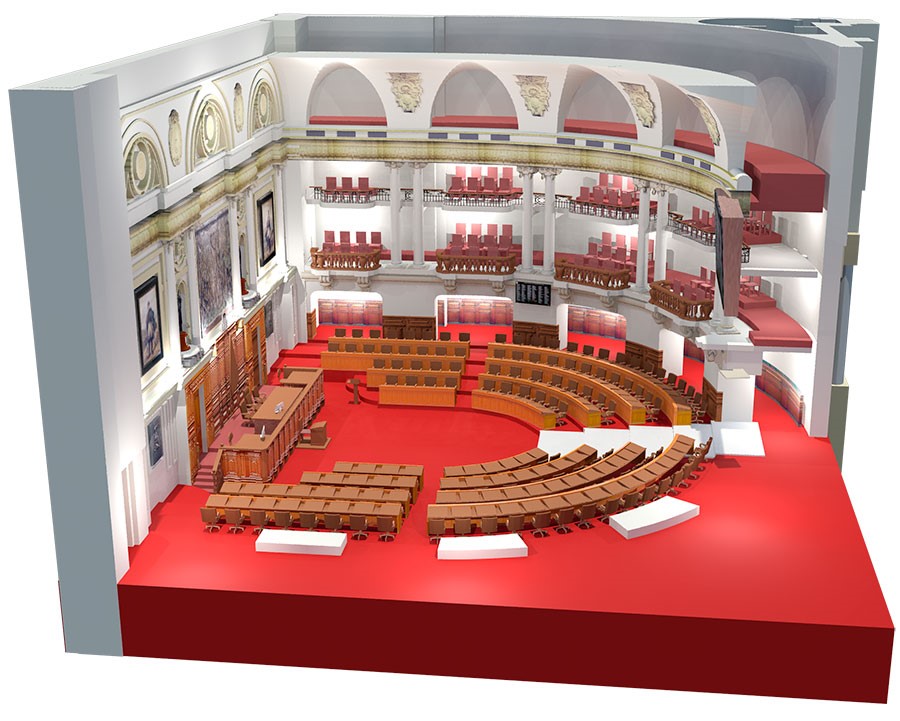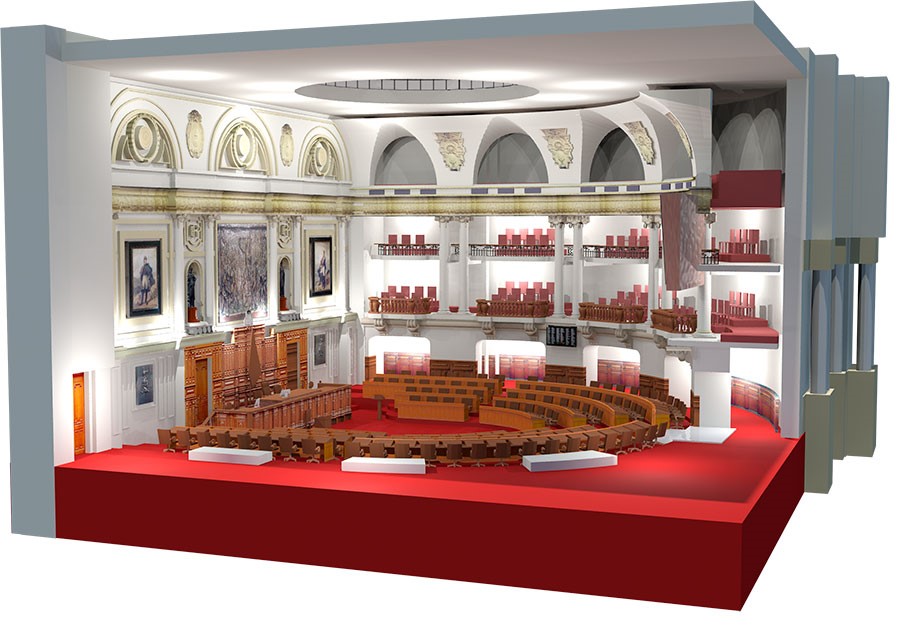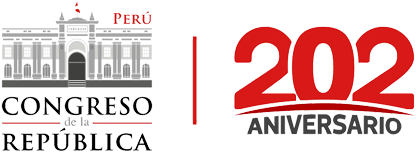“Año de la recuperación y consolidación de la economía peruana”
“Year of the Recovery and Consolidation of the Peruvian Economy”
“Jahr des Aufswungs und der Konsolidierung der peruanischen Wirtschaft”
“Année de la reprise et de la consolidation de l'économie péruvienne”
“Peru mamallaqtapaq qullqi kausarichiypaq, sinchiyachina wata”
GETTING ACQUAINTED WITH THE LEGISLATIVE PALACE
SESSION HALL OF THE CONGRESS
This first picture shows the main Session Hall of the Congress, where you can see several features that make this room one of the most important of the Legislative Palace. Select the area you would like to see with the mouse pointer, and this will lead you to a new window with the place chosen (these windows are in Spanish only).
Cross section of the upper side of the Main Session Hall

Cross section of the side of the Main Session Hall

The main Session Hall of the Congress of the Republic of Peru is the room where regular plenary sessions are held with the attendance of the legislators. Pursuant to parliamentary Standing Orders, plenary sessions must be held at least once a week.
This impressive hall was inaugurated in 1908, under the name of Session Hall of the Chamber of Deputies, on the occasion of the inauguration of the presidential administration of Augusto B. Leguia.
After this ceremony, the legislators continued to hold meetings in the building of the Palace of the Exposition, while construction work continued in the Legislative Palace. The then-President of the Chamber of Deputies was Mr. Juan Pardo Ibarreda.
On July 13, 1912, the Chamber of Deputies finally started to hold its sessions in the current building, though this one was not completely finished. The only sections of the Palace that had been completed were the Main Session Hall, the Hallway of the Lost Steps, and the left corridor leading to the President’s Office.
Ismael Correa Echegaray, in his book "La Cámara de Diputados y las Constituyentes del Perú"(The Chamber of Deputies and the Constituent Assemblies of Peru) gives us a description of the Session Hall at the commencement of its construction. "The vault was decorated by hand by Víctor M. Altissimo, a Bolognese artist particularly hired for this job, which was concluded in 1919". He adds that "the decoration of this hall was made on plaster placed on expanded metal, conveniently fastened on wooden frames with a mixture of cement on the ceiling next to the large lamp, and in contact with the open air to possibly avoid rain leaks. The Hall had a four-level floor where the desks and seats of the Representatives were located thus forming four wide rows. Side aisles were separated by eight wood-and-crystal screens whose structure formed a pillar-to-pillar arcade, which improved the acoustic conditions of the room, which lacked microphones to amplify sound. On top of the pillars there are bronze coat-of-arms for each department existing at the moment of the construction of the building"
The vault ended in lamp of large dimensions above which there was an artistic stained-glass window, which represents the Sun shining to four corners: art, peace, law, and justice.
As the number of deputies increased, it was necessary to place more seats; therefore, another level was added, and the floor was raised. A row of seats was added in the middle of the room, and another one below the portals, all of which increased the capacity of the hall. The screens were removed and draperies were placed instead, which were also removed later. At that time a new vault was constructed, always keeping the same style of the original, though the decorations made by Altíssimo disappeared. The bronze coat-of-arms on the pillars were also removed; thus, the hall looked slightly different, along with other modifications made with the passage of time.
- History of the Legislative Palace
- Getting acquainted with the Legislative Palace





